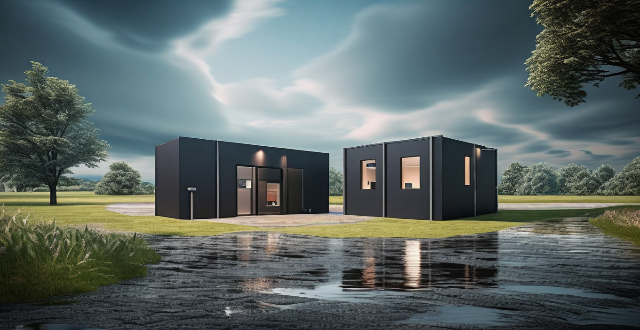Huawei's 5G base stations are versatile and can be utilized in a variety of settings, but they are particularly well-suited for certain use cases and industries due to their advanced features and capabilities. In smart cities, they can enable efficient communication between devices and services, leading to improved public safety, transportation, energy usage, and more. In healthcare, the high-speed and low-latency capabilities of Huawei's 5G base stations can greatly benefit telemedicine, remote monitoring, and robotic surgery. In manufacturing, they can enhance automation, predictive maintenance, and supply chain optimization. Finally, in entertainment and media, they can enable seamless VR/AR experiences, live event streaming, and interactive content creation. By leveraging these capabilities, businesses and organizations can unlock new opportunities and improve existing processes in their respective fields.

Huawei's 5G Base Stations: Ideal Use Cases and Industries
Huawei's 5G base stations are versatile pieces of technology that can be utilized in a variety of settings. However, there are certain use cases and industries where these base stations are particularly well-suited due to their advanced features and capabilities. Here are some examples:
Smart Cities
In the realm of smart cities, Huawei's 5G base stations can play a crucial role in enabling efficient communication between various devices and services. This can lead to improved public safety, transportation, energy usage, and more. For instance:
- Traffic Management: Real-time data from traffic cameras and sensors can be analyzed to optimize traffic flow and reduce congestion.
- Public Safety: First responders can benefit from faster communication and access to real-time data during emergencies.
- Smart Energy: Grid operators can monitor and manage energy consumption more effectively, leading to reduced waste and lower costs.
Healthcare
The healthcare industry can greatly benefit from the high-speed and low-latency capabilities of Huawei's 5G base stations. Some potential applications include:
- Telemedicine: Doctors can remotely diagnose and treat patients using real-time video conferencing and medical equipment connected via 5G.
- Remote Monitoring: Patients with chronic conditions can be monitored continuously using wearable devices that transmit data over 5G networks.
- Robotic Surgery: Surgeons can perform complex procedures on patients located far away using robots controlled over 5G connections.
Manufacturing
Manufacturing processes can be significantly enhanced with the help of Huawei's 5G base stations. Some specific use cases include:
- Automation: Robots and automated systems can communicate with each other and human operators in real-time, improving efficiency and reducing errors.
- Predictive Maintenance: Machines can send diagnostic data over 5G networks, allowing for proactive maintenance before issues arise.
- Supply Chain Optimization: Real-time tracking of goods and materials can help optimize inventory management and reduce costs.
Entertainment and Media
The entertainment and media industry can also leverage Huawei's 5G base stations for enhanced experiences. Some examples include:
- Virtual Reality (VR) and Augmented Reality (AR): High-bandwidth 5G connections enable seamless VR/AR experiences for gaming, education, and training purposes.
- Live Events Streaming: High-quality live streaming of events such as concerts, sports games, and conferences can be achieved with minimal latency.
- Interactive Content: Interactive movies, TV shows, and online courses can be created using 5G's low latency and high bandwidth.
In conclusion, Huawei's 5G base stations offer numerous benefits across various industries due to their advanced features like high speed, low latency, and increased connectivity capacity. By leveraging these capabilities, businesses and organizations can unlock new opportunities and improve existing processes in their respective fields.